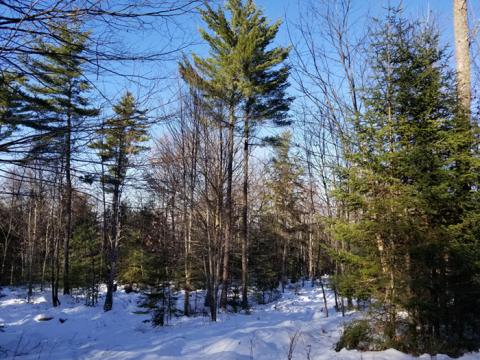Forestry - Long-term Agriculture

Forestry is essentially long-term agriculture. Someone I met with an agricultural background who is now involved with forestry described foresters as “slow farmers”. The crops are the trees, but instead of harvesting each crop annually, it’s a much longer time frame. Even in the most productive timber producing regions (the US South and Pacific Northwest, for example), the final crop, sawtimber, is usually harvested after at least 30-40 years, and in the case of the northeastern hardwoods, up to 100-120 years.
Thinking about forestry as a form of agriculture isn’t new. The Tree Farm program was developed in the early 1940s, in a departure from the old practice of logging the merchantable trees on a parcel of land and moving on, to a focused practice of “growing trees as a crop”.
Different Ways to Manage Forests
Like agriculture, there are different ways of going about managing forests. There’s the industrial model – monoculture of one or two species, grown with lots of inputs – fertilizers, pesticides, herbicides. Think corn and soybeans, or southern loblolly pine plantations. Then there’s the organic, holistic model – multiple species, maintaining ground cover, minimizing or eliminating soil disturbance, paying attention to ecological processes. Forestry as practiced in the northeast, especially on private, family-owned tracts, has much more in common with the organic agriculture model, and essentially approaches the organic gardening end of the spectrum. Forests are much more complex ecosystems than an organic garden, but there are many similarities. Many species are grown for crops on each unit of land, ecological processes are respected, soil disturbance is minimized or eliminated, and wildlife and sensitive soils are considered, and protected or enhanced.
Not Just Timber Extraction
When thinking about forestry, it’s important to think of it as more than simply the extraction of timber. Extraction of trees for useful products is a part of the process, but not the whole process. It would be like assuming that the harvest of vegetables from the garden is all there is to gardening. The extraction of trees is an important goal of forestry, but it is not the only goal. If it were the only goal, it would not be forestry, it would be timber mining.
The harvest of trees, through the science of silviculture, is designed to accomplish several goals – the manipulation of forest vegetation (just like the vegetation in a garden is manipulated to optimize growth of desired plants) to improve the growth and value of future timber, increase species diversity, improve structural diversity, create wildlife habitat, and develop resilience to disturbance. Extraction of trees also produces income for the landowner, income that can be used to further enhance the forest, whether for building trails, creating wildlife habitat, developing access, or improving future timber value through early tending. Income can also be used for non-forest goals – helping to pay for a child’s education for example, or a family member’s health care. One of the great aspects of forestry is that a landowner can generate income from their forest, increase the value for the future, and still have a healthy, thriving forest.
A Beneficial Material
Harvesting wood from a well-cared for forest is really no different from harvesting food from a well-cared for farm or garden. We understand, appreciate, and respect local, organic food. So why not local, organic wood? Food is much more visible in our daily lives – we all eat every day, we directly handle food, we purchase it, we prepare it, we may grow some of it ourselves. We all use wood every day too, even though we might not handle it directly – it’s in our houses, our furniture, the paper we write on, in our musical instruments, and perhaps we heat our homes with it. The list of items made from wood is long. Wood uses significantly less energy than other materials to produce, it’s versatile in its uses, and it’s renewable, recyclable, and biodegradable. It stores carbon – not just in standing, growing trees, but in solid wood products. And a forest that has been recently harvested will support wildlife immediately after the harvest is completed, and even while harvesting is taking place.
This isn’t to say we should manage every acre of forest for wood production, or that we shouldn’t try to reduce our consumption of materials. But when it comes to choosing materials, managing forests and harvesting wood has many benefits that other materials don’t have. And if we’re going to use wood, why not harvest it from a well-cared for forest in our local region? There are many benefits to the economy from the woods to the mill to the manufacturer and beyond.
Sources:
- The American Tree Farm System. Forest History Society. Retrieved from: https://foresthistory.org/digital-collections/american-tree-farm-system/
- Conversation with Shane O’Neill, Forest Industry Business Development Manager, University of Maine
